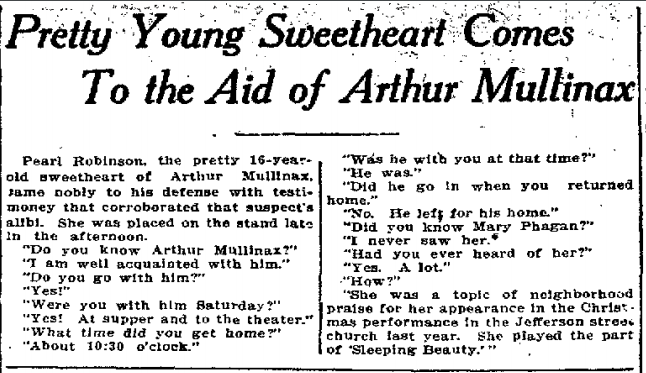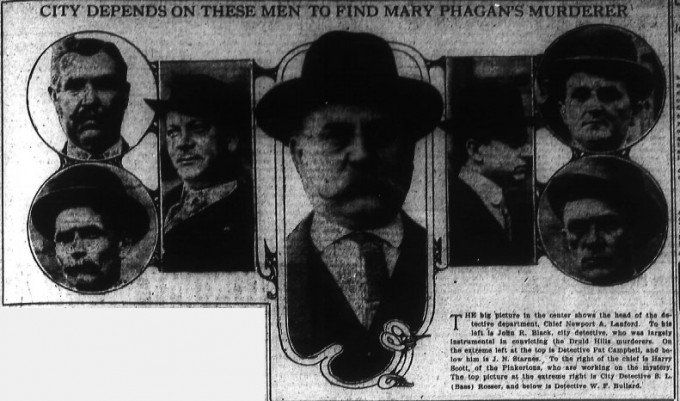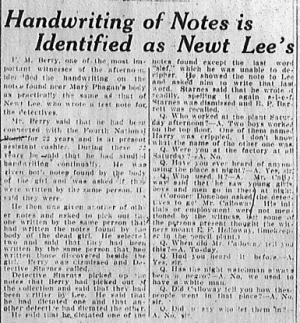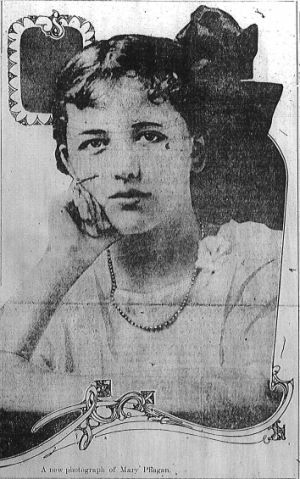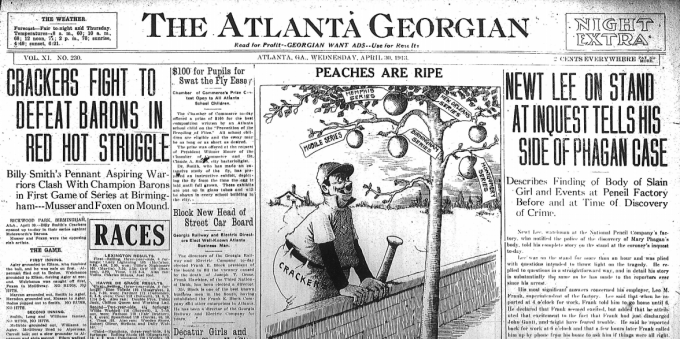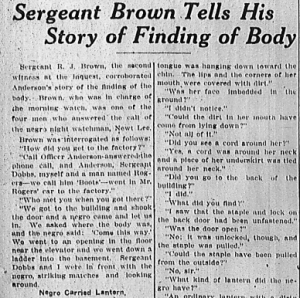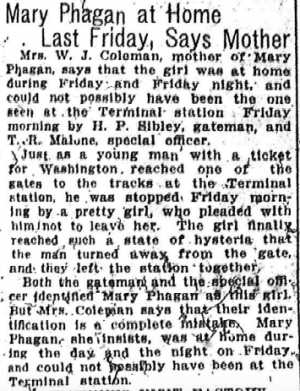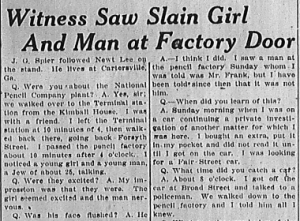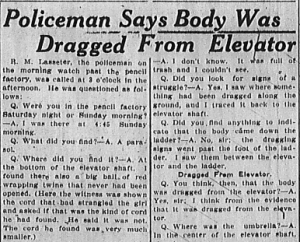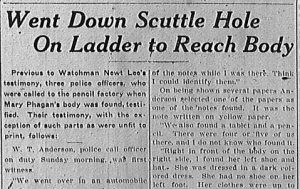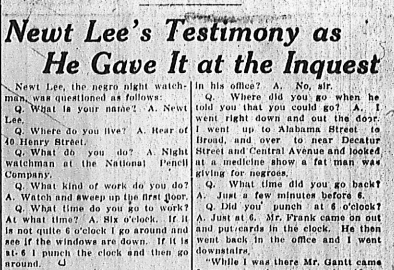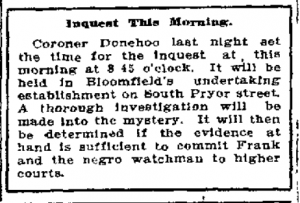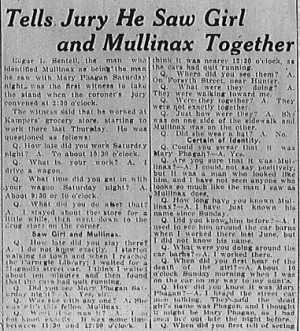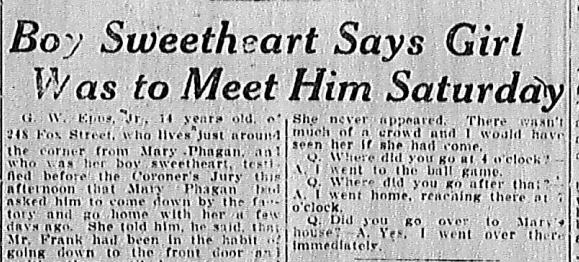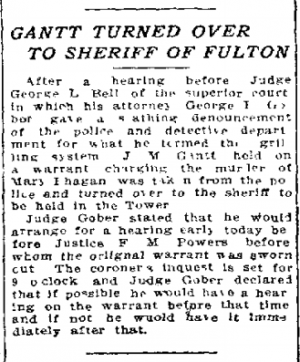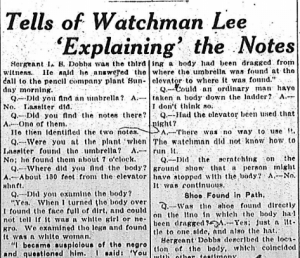Another in our series of new transcriptions of contemporary articles on the Leo Frank case.
Atlanta Constitution
Thursday May 1st, 1913
Following Mechanic Barrett’s declaration that there were two men at work Saturday at noon on the top floor of the factory building, Coroner Donehoo ordered detectives to accompany the machinist to the plant and bring the two employees to police headquarters.
They were brought immediately into the inquest. Their names were given as Harry Denham and J. Arthur White. Denham was first placed on the stand. His examination began immediately upon arrival.
“Did you see the blood on the lathing machine?”
“I saw it Monday.”
“Were you on that floor Saturday?”
“No. I was on the top floor.”
“Did you see Frank at any time of the day?”
“Yes.”
Asked When They Would Finish.
“Did he offer you holiday as the others had been given?” Continue Reading →

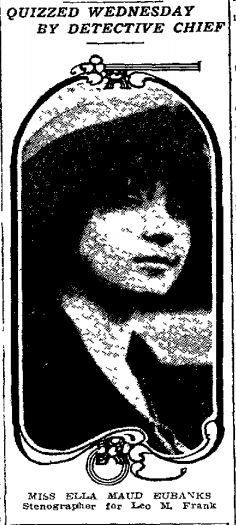
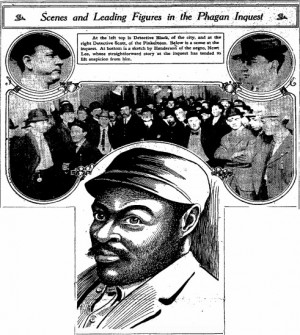
![J. A. White [left and] Harry Denham. The two mechanics who were the last workmen to leave the National Pencil company on Saturday afternoon. Leo M. Frank was in the building when they went out. Photo by Francis B. Price, Staff Photographer.](https://www.leofrank.org/wp-content/uploads/2016/04/Newt-Lee-Tells-His-Story-During-the-Morning-Session-300x414.png)
